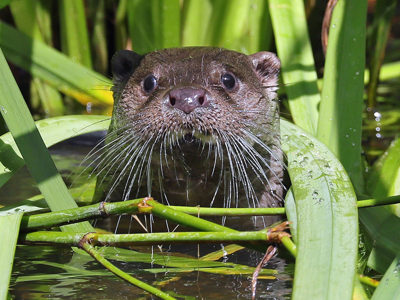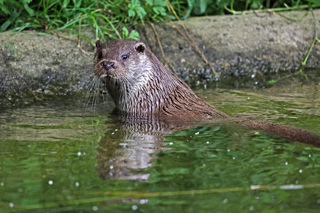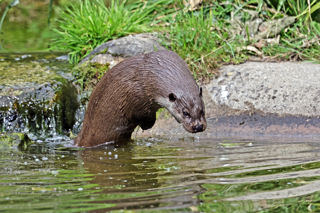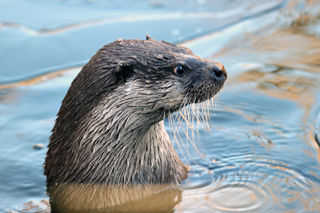
European Otter
Lutra lutra
The European otter is a carnivore from the mustelid family. Like most otter species, they are well adapted to a life near water. They have a long, sinous body, webbed feet, and can close their ears and nose when underwater. They can live up to 14 years in captivity, but live an average of 5 years in the wild.
Behaviour
Secretive, solitary, and mostly nocturnal. Territorial by nature, individuals only tend to come together to mate. Mothers with pups are the most common social groupings of otters. Territories are marked by depositing faeces (spraints) in prominent places within it.
UK Status
Eurasian otters suffered a dramatic decline across their whole range in the second half of the 20th century. By the 1960s, their range had reduced to mainly Scotland, and western Wales. Pollution from chemicals leaching into water courses use was attributed to one of the major causes of this extensive decline. Following a ban on harmful pesticides across Europe in 1979, otter numbers have started to recover.
In the UK, as of 2011, the Environment Agency announced there had been a huge resurgence in otter populations as English rivers were considered their healthiest for more than 20 years.
Threats
Habitat loss is a significant threat to otters; the removal of bank vegetation, dam construction, drainage and other aquaculture activities can have negative effects on otter populations. Pollution is also a large contributor to their historic decline.
Organo-chlorine pesticides (DDT) and mercury are the main pollutants, and cause the decline of fish within lakes and rivers. Due to this, otter food resources are diminished and otter populations decline. Hunting for furs and persecution from anglers have also all been contributors to local declines.

Distribution
One of the widest distribution of any northern mammal and the widest distribution of any otter species. Found readily across three continents; Europe, Asia and Africa. Within its historic range, has suffered localised extinctions (such as in Switzerland).
Habitat
Inhabit any wetland habitat as long as there is ample food supply such as rivers, streams, swamp forests, marshes, coastal areas, and lakes. River bank vegetation is important for refuge, as well as opportunities for creating holts (dens) in the bank such as tree roots and cavities in the bank.
Diet
Varied carnivorous diet, but up to 80% of it can be fish. In addition to fish, other prey items can include any aquatic insects, reptiles, amphibians, small mammals, birds and crustaceans.
Wildwood inside information
Our otter is near the entrance of the park in an enclosure opposite the Ken West aviary. Our permanent resident is a male called Loki. Although Loki is normally quite the show off, he does occasionally hide up in the reeds at the back of the enclosure or takes a break in his on-show holt.
Family facts
There are 13 different species of otter all around the world, the largest being from South America and reaching an average of 5ft in length!
Otter spraint aromas can vary quite a lot and are not always unpleasant (some people have described it as “freshly mown grass” or even “jasmine tea”).
A group of otters is called a “romp”.



